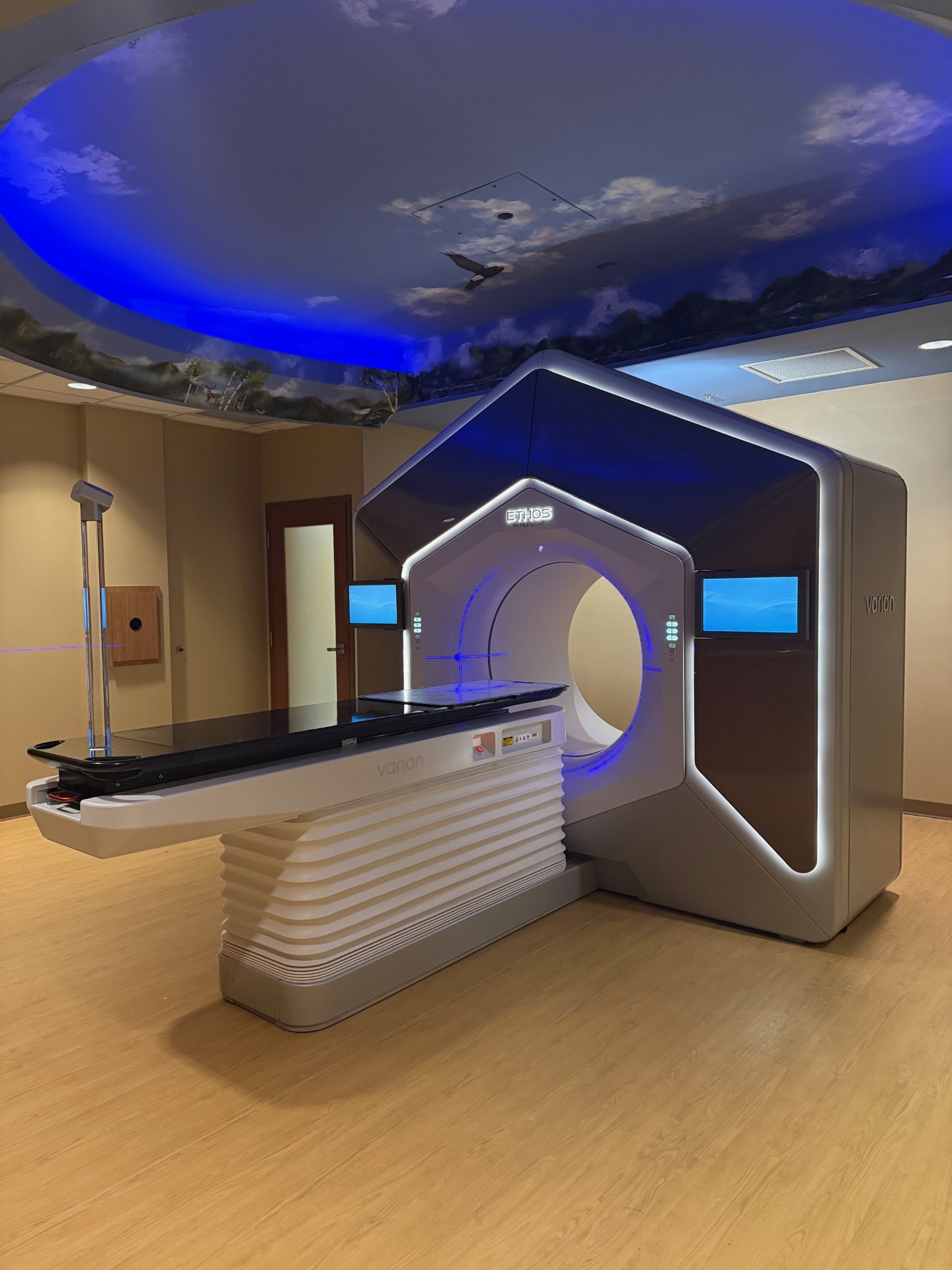Treatment Modalities
Varian Ethos System
Radiation Therapy with AI-driven Adaptive Therapy:

Provision offers the newest and most advanced state-of-the-art technology to provide daily personalized cancer treatment through adaptive planning capabilities. It is normal for anatomy changes to occur during the course of treatment, such as weight loss, tumor shrinkage, shifts in healthy tissue or organs, which become critical considerations for safe and effective treatment delivery. Advanced technology allows visibility to these changes and the ability to adjust the treatment plan accordingly in real-time.
Key Features of ETHOS Radiation Therapy System:
- Adaptive Radiotherapy: Ethos adjusts the treatment plan daily based on changes in the patient’s anatomy, such as movement of the tumor or surrounding organs.
- AI-Powered Treatment Planning: The system uses AI to automatically generate treatment plans, taking into account the patient’s specific anatomy and medical history.
- Patient-Centered Design: Ethos is designed to be comfortable and convenient for patients, with features such as a magnetically driven couch and a streamlined workflow.
- Versatility: Ethos can be used for a wide range of cancer treatments, including prostate, breast, lung, and head and neck cancers.
3D & 4D Conformal Radiation:
3D conformal radiation is a radiation therapy technique that sculpts radiation beams to the shape of a tumor. This is ideal for tumors that have irregular shapes or that lay close to healthy tissues and organs. Using this radiation technology, we’re first able to view a tumor in three dimensions with the help of image guidance. Based on these images, we then deliver radiation beams from several directions to the tumor. Matching the radiation dose to the exact dimensions of the tumor allows us to deliver a higher dose, while limiting radiation exposure to surrounding healthy tissues.
Intensity Modulated Radiation Therapy (IMRT):
Intensity modulated radiation therapy (IMRT) is a state-of-the-art radiation delivery system. IMRT treats difficult-to-reach tumors in the prostate with greater precision than conventional radiation. As a result, Provision Radiation Oncologists are able to use higher radiation doses and minimize damage to the surrounding healthy tissue.
There are several ways IMRT differs from conventional radiation therapy:
- Employs a powerful, advanced software to plan a precise dose of radiation, based on tumor size, shape and location.
- Delivers prostate cancer radiation in sculpted doses that match the exact 3D geometrical shape of the tumor, including concave and complex shapes.
- Adjusts the intensity of radiation beams across the treatment area as needed with laser accuracy. Because of its greater degree of accuracy, IMRT may be a treatment option if you have reached the maximum allowable dose of prostate cancer radiation therapy and have a recurrent tumor in the treated area.
Stereotactic Body Radiotherapy (SBRT)
Stereotactic Body Radiation Therapy is a type of radiation that uses many beams of energy that are carefully targeted to focus on growths of cells (tumors) anywhere in the body. SBRT is primarily used to treat tumors in the lung, spine, liver, neck, lymph nodes or other soft tissues.
Volumetric-Modulated Arc Therapy (VMAT):
Volumetric Modulated Arc Therapy is a form of IMRT and a newer type of external beam radiation that delivers a customized continuous dose of radiation to the tumor, as the machine encircles your body in one or more rotations, or arcs.
Respiratory Gating:
Respiratory gating is a technique used in medical imaging and radiation therapy to minimize the effects of respiratory motion on the accuracy and quality of treatment delivery. This technique synchronizes the acquisition of images or delivery of radiation with the patient’s breathing cycle.
CBCT and Onboarding Imaging:
CBCT (Cone-Beam Computed Tomography) is a specialized 3D imaging technology that can be integrated into “on-boarding imaging” (OBI) systems, most commonly in radiation oncology and dentistry. This process allows for real-time visualization of the tumor and surrounding anatomy.
